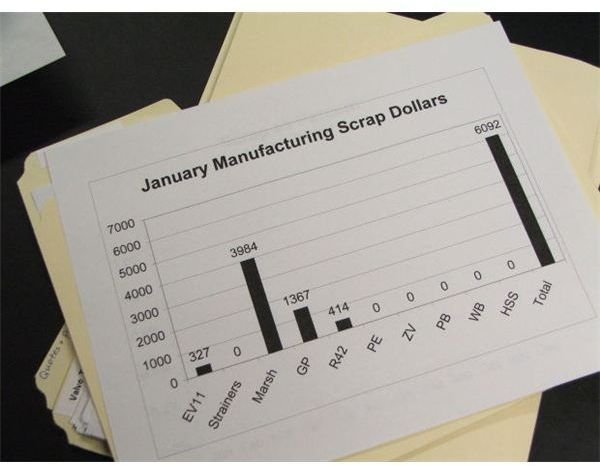A Guide to Interpreting Pro Forma Income Statements: Revenues & Expenses
What Is a Pro Forma Income Statement?
Pro forma actually means that you will be predicting and guesstimating on items like sales revenues, cost of goods sold, and expenses to determine a hypothetical profit. They are used for both new businesses to project these items, especially if they’re seeking funding and also by investors who want to examine how well the business owner plans on doing as far as profits.
When it comes to Interpreting pro forma income statements, it’s best to have an example. First, download the free sample of a pro forma income statement in our Media Gallery. Next, we’ll take a look at each element of the pro forma income statement and learn how to interpret this financial form.
Sales & Cost of Sales
Pro forma income statements are great for both startup and existing businesses. For the new business owners, they can use it to predict sales revenues by first pricing their products and calculating the anticipated costs of sales. For the existing business owner, historical data is often used increased based on market research and trends.
When creating projections for future sales revenues, most business owners often hit these numbers right on point, especially by looking at competitor pricing. However, many business owners make the mistake of under-judging the true cost of sales, hence a nice and juicy gross profit appears on the pro forma income statement.
Not calculating or even estimating the correct cost of goods sold can be deadly, especially if you have investors looking at your pre-business startup. Experienced investors can tell pretty quickly if you’re overstating your gross profits.
Make sure you include things like inventory costs, labor and payroll costs (including payroll taxes), and other items associated with the cost of your goods or services. For new business owners, if you have trouble doing this, speak with your accountant. Most accountants can help you determine if the cost of sales you’ve set are close or way off the mark.
Perform an Internet search to find out what profit margins your particular products or services usually gain. For example, most auto parts stores usually realize a profit margin between 10% and 15% on the parts they sell; more on larger selling parts and less on slower moving parts. If you were to under-judge true costs and your pro forma income statement shows profit margins out of this world or way above industry standards, you need to recalculate your cost of goods sold. The sample pro forma income statement in our Media Gallery is able to automatically calculate profit margins prior to expenses.
Predicting Expenses
One nice thing about our sample pro forma income statement is its ability to either figure salaries separately or include them in your costs of goods sold. Often, for the new business owner, it’s best to utilize the form we’ve provided here, as it breaks down all your wages and labor costs so you don’t miss important items in the cost of goods sold.
Here again, the new business owner who has never prepared a pro form income statement, often enters each expense item the first time around much lower than they should be. Just like initial sales forecasting for revenues, you need to be realistic about expenses. Again, investors or lenders, who are very good at interpreting pro forma income statements can quickly spot expenses that are fiction.
Actually, the very first pro forma income statement is the hardest one to prepare. Once you’ve got even one year of historic numbers behind you, it’s easy to project the future based on past performance.
Tips on Pro Forma Income Statements

My articles, Examples of Pro Forma Income Statements and Tips for Forecasting Initial Sales will help you tremendously if you’ve never prepared a pro forma income statement before.
One of the most important tips to remember when preparing these financial forecasts is to be realistic and honest about what you think you’ll sell and spend. New business owners may not be as good as interpreting pro forma income statements as lenders or investors, and don’t expect your first one to come out exactly correct.
Do take the time to look at market trends and competitors. Don’t under estimate your cost of goods sold and for expenses, really delve into some research, especially when it comes to items like utilities and the owner’s salary. I have found that these two expenses are constantly under-judged. In fact, most new business startups fail because they spend more than they make. Expect expenses and imagine what if scenarios. If you’re a new business owner, you can find some written examples of startup expenses right here on Bright Hub.
Allow an unbiased eye look at your pro forma income statement when it’s completed and tell them to ask the tough questions on each line item. If you can’t readily answer those questions, you may have to revisit your calculations.
Finally, keep in mind that every business owner has had to face the pro forma income statement and by revisiting yours annually, no matter when it’s time to produce one, the more you work at it, the more accurate you’ll be.
Some useful government agencies that have online seminars and free help include the Small Business Administration (SBA) and their affiliate SCORE. SCORE, much the same as the SBA, has offices in every state and tools to guide the new small business owner when it comes to preparing initial financial documents.
Image Credits
- Project Revenues Accurately (MorgueFile)
- Review Your Pro Forma Statement (MorgueFile)
This post is part of the series: Income Statements
Find tips on how to prepare, read and analyze income statements along with examples and free templates you can download for personal or business use.
